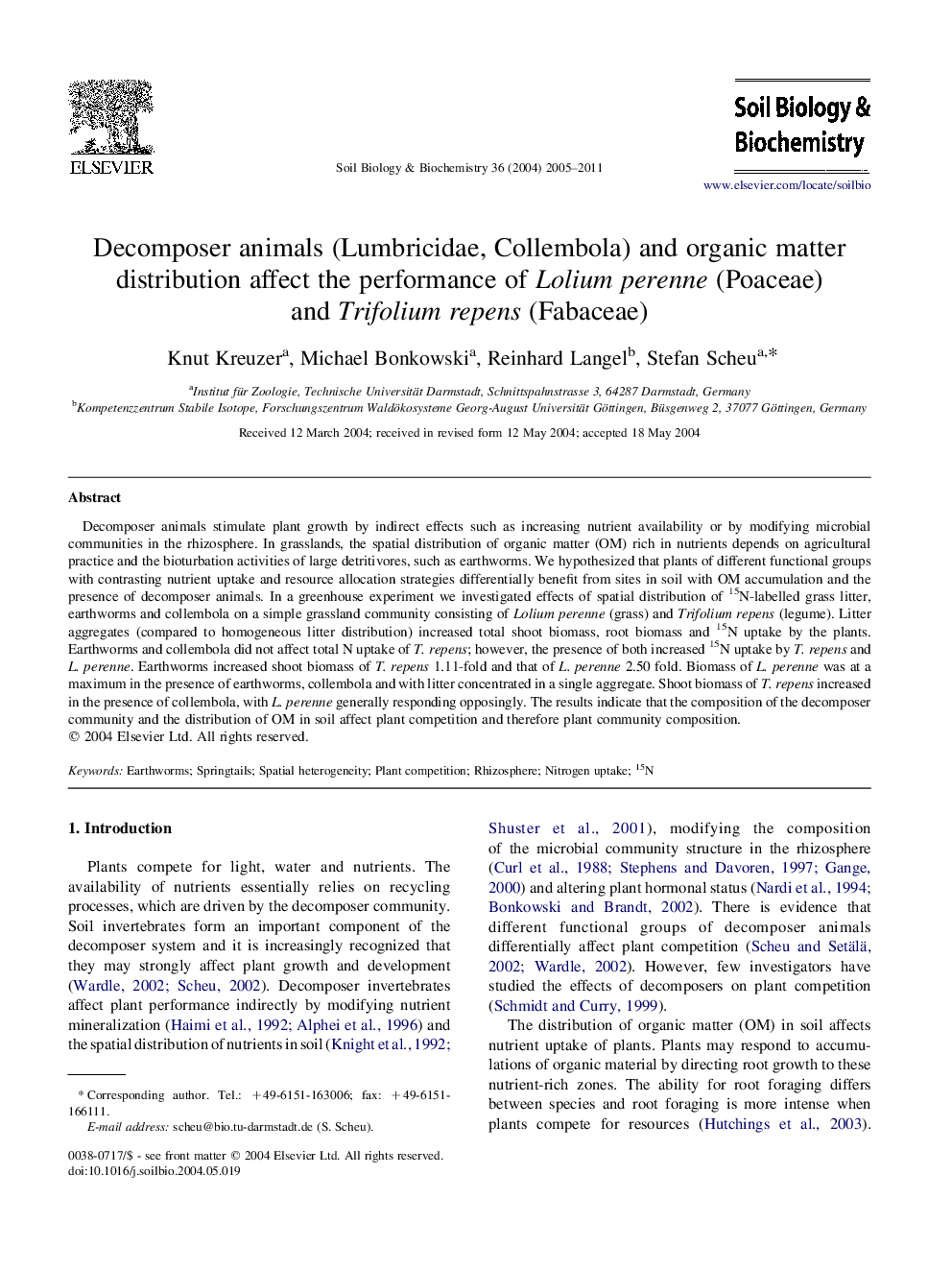| Article ID | Journal | Published Year | Pages | File Type |
|---|---|---|---|---|
| 2027279 | Soil Biology and Biochemistry | 2011 | 7 Pages |
Decomposer animals stimulate plant growth by indirect effects such as increasing nutrient availability or by modifying microbial communities in the rhizosphere. In grasslands, the spatial distribution of organic matter (OM) rich in nutrients depends on agricultural practice and the bioturbation activities of large detritivores, such as earthworms. We hypothesized that plants of different functional groups with contrasting nutrient uptake and resource allocation strategies differentially benefit from sites in soil with OM accumulation and the presence of decomposer animals. In a greenhouse experiment we investigated effects of spatial distribution of 15N-labelled grass litter, earthworms and collembola on a simple grassland community consisting of Lolium perenne (grass) and Trifolium repens (legume). Litter aggregates (compared to homogeneous litter distribution) increased total shoot biomass, root biomass and 15N uptake by the plants. Earthworms and collembola did not affect total N uptake of T. repens; however, the presence of both increased 15N uptake by T. repens and L. perenne. Earthworms increased shoot biomass of T. repens 1.11-fold and that of L. perenne 2.50 fold. Biomass of L. perenne was at a maximum in the presence of earthworms, collembola and with litter concentrated in a single aggregate. Shoot biomass of T. repens increased in the presence of collembola, with L. perenne generally responding opposingly. The results indicate that the composition of the decomposer community and the distribution of OM in soil affect plant competition and therefore plant community composition.
